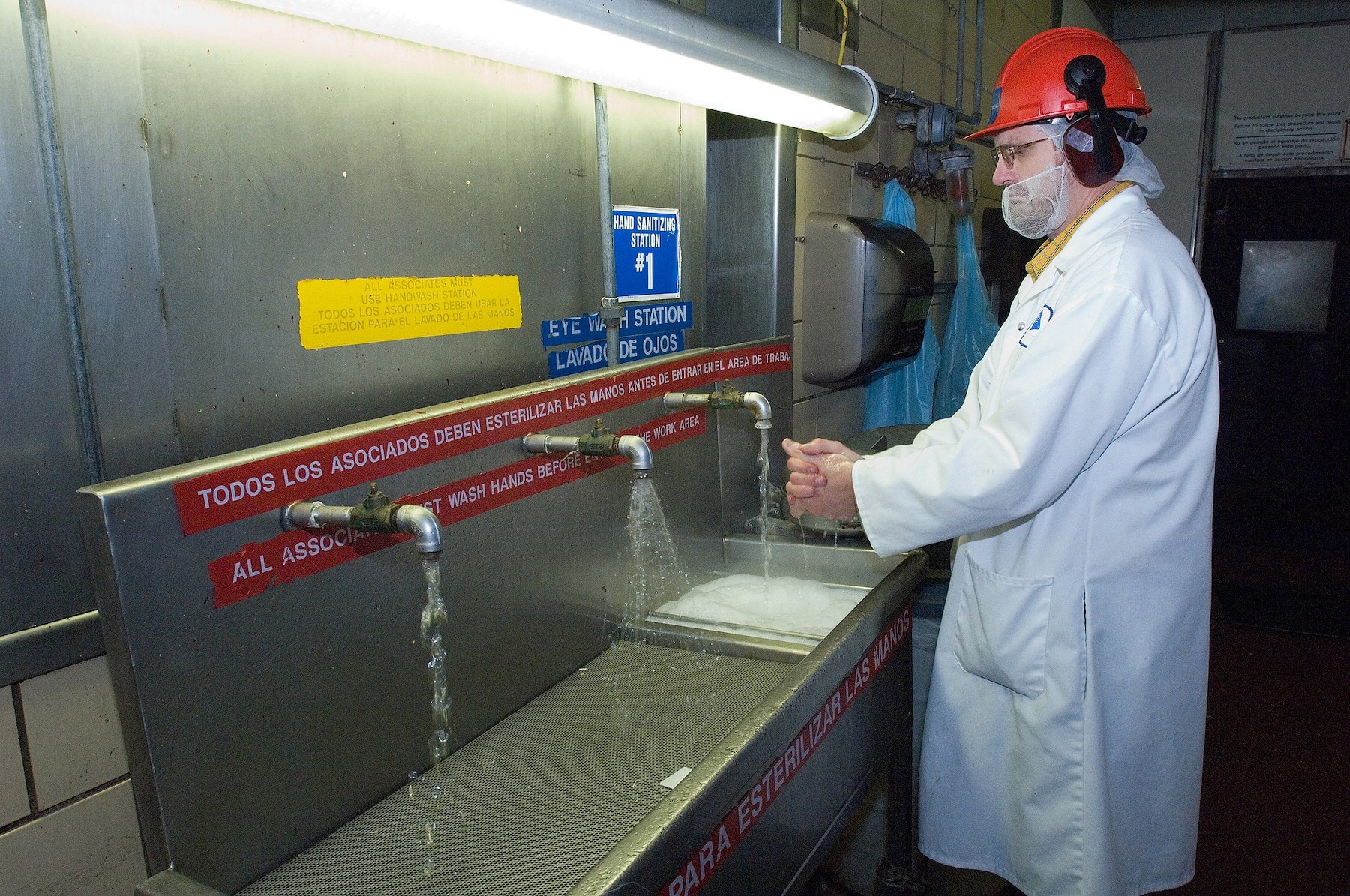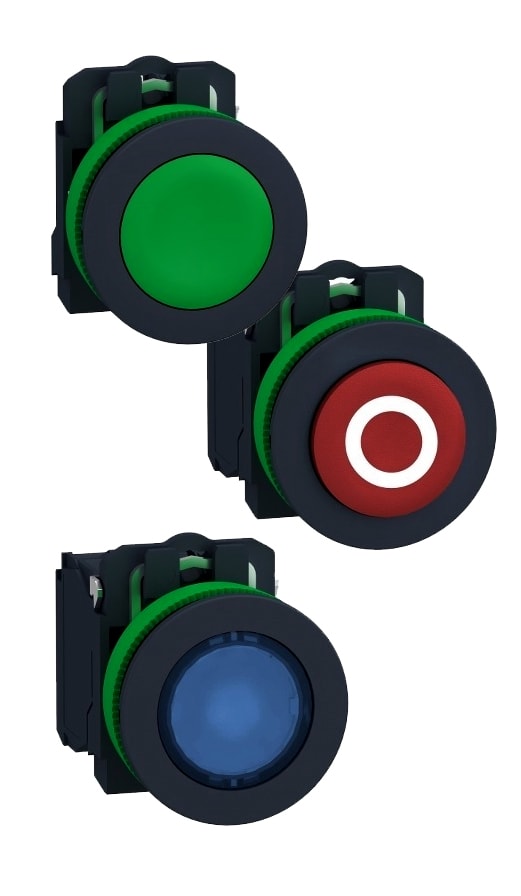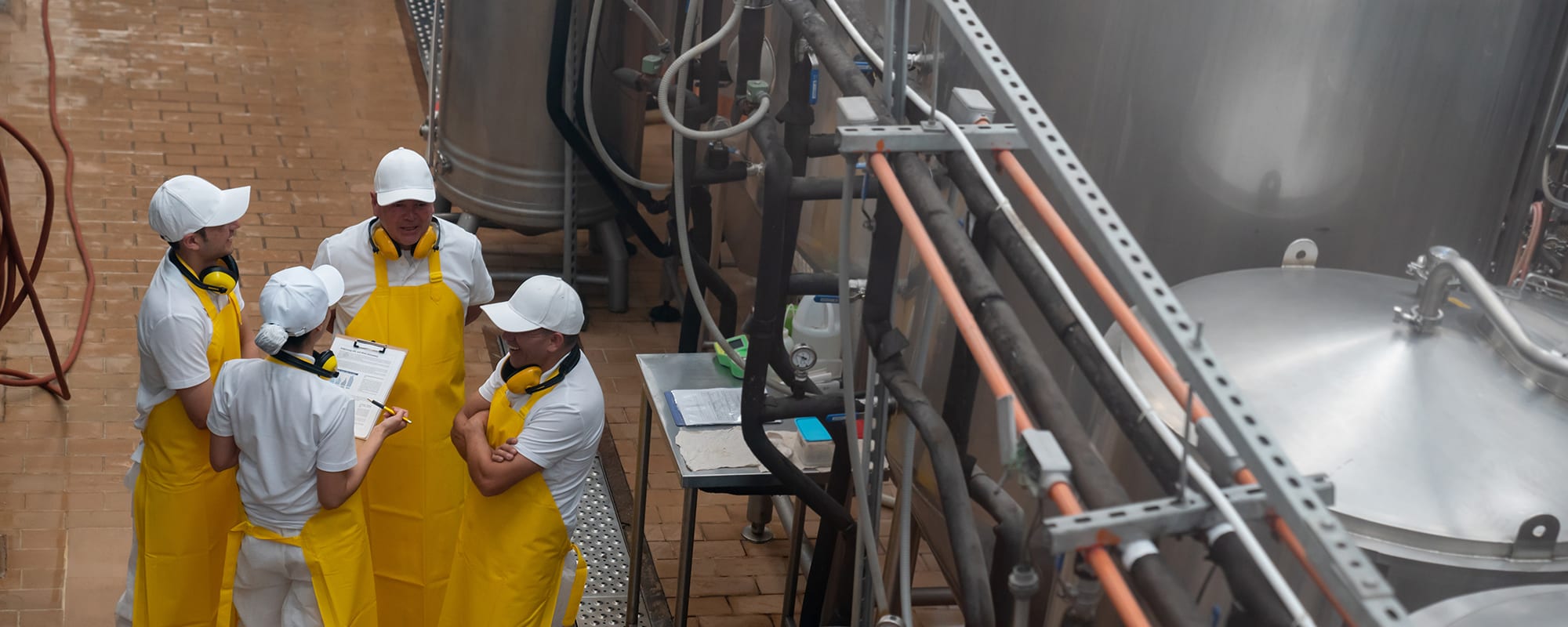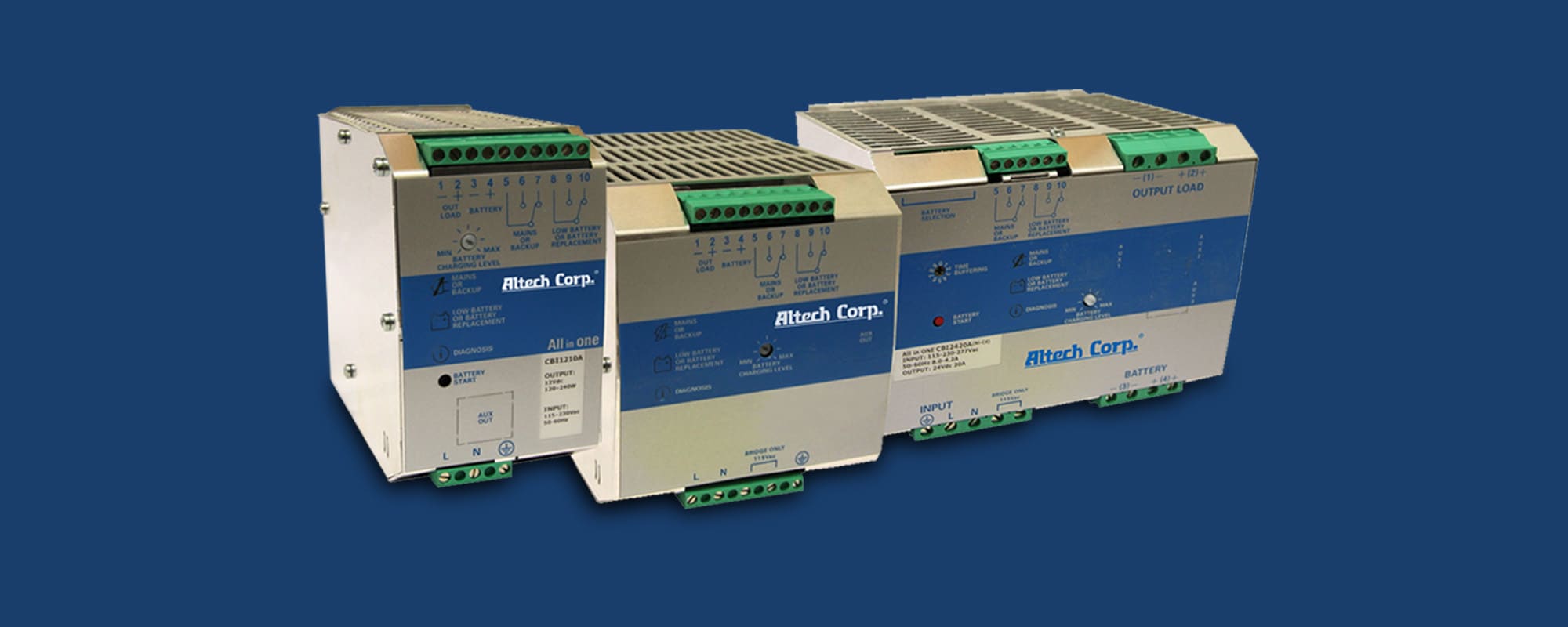Josh Mitchell, National Manager – Control and Signaling at Schneider Electric, shares two strategies for improving workplace sanitation and employee health in food and beverage manufacturing environments and introduces a few products that can help.
Josh Mitchell, National Manager – Control and Signaling, Schneider Electric
Good hygiene isn’t limited to personal activities like washing our hands. It also extends into professional settings where close quarters, shared contact points, and high traffic areas can become hotbeds for contagions. The industrial manufacturing industry has long had stringent standards for employee and product safety, especially in high-risk segments like the food and beverage industry. But recent risks related to the COVID-19 pandemic have made many manufacturers amp up their approaches to sanitary risk prevention.
Although the pandemic has waned to a point that the U.S. no longer considers COVID-19 an official public health emergency, it’s far from gone. Even with today’s less comprehensive data, totals are estimated at about 200,000 new cases and 1,000 deaths per day. In response to this new reality, which has resulted in a significant amount of production, employee, and financial losses over the past several years, many manufacturers are working to better protect their employees’ heath in the workplace.

Food and beverage manufacturers have always been amongst the industry leaders in sanitation due to the added risks and regulations associated with producing consumable goods. So, it’s no surprise that they’re some of the earliest adopters of practices and technologies intended to improve workplace sanitation and employee health in today’s higher-risk environment. Two of the most accessible strategies include consistently enforcing sanitation guidelines to rethinking contact points.
Consistently Enforcing Sanitation Policies
Food and beverage manufacturers already have an array of sanitation policies in place. But as the COVID-19 pandemic proved, having sanitation policies in place doesn’t necessarily mean that they’re being followed.
Many workplace sanitation policies stem from basic common sense, such as making sure employees wash their hands, maintain social distance when possible, and regularly sanitize workstations and operating equipment in accordance with the guidelines issued by equipment manufacturers and/or governing bodies. Most of these basic policies were in place before the pandemic, but they weren’t always consistently enforced.
Regulatory requirements such as the Hazard Analysis Critical Control Points (HACCP), the Occupational Safety and Health Administration (OSHA), and the ISO 22000 food safety management standards all require food and beverage manufacturers to have effective systems and controls in place to ensure the safety of both consumable goods and employees. But until the COVID-19 pandemic, these regulations were rarely strictly enforced. Now, it’s no longer enough to just show auditors and regulatory representatives that you have them in place; food and beverage manufacturers must prove that they’re being enforced and adhered to.
This requires data — a lot of it. To acquire such data, manufacturers need to embrace data digitalization and IIoT technologies that allow them to record, manage, and track non-conformance and corrective and preventative actions. For more information about modernization efforts that can help manufacturers kickstart their digital transformation and, in turn, increase efficiencies, improve product quality and employee and equipment safety, reduce costs, and maximize profits, check out our “Modernizing Food and Beverage Manufacturing” RS Expert Advice article.
Rethink Contact Points

While embracing new technologies like IIoT networks can significantly improve employee and equipment safety and generate a ton of useful data, risk mitigation solutions don’t always have to be so technical.
For example, pushbuttons are often the most highly trafficked contact points for food and beverage equipment operators. So, over time, continuous use without proper sanitation can make these surfaces high-risk areas for disease transmission. To mitigate this risk, there are a few different strategies manufacturers can consider.
The most obvious strategy is to regularly clean pushbuttons with alcohol or other sanitizing agents. However, even this simple solution comes with risks worthy of consideration. Most pushbuttons have an IP protection rating that indicates how well they prevent the ingress of both solid foreign objects (including fingers, tools, dirt, and dust) and water. But IP ratings don’t address wear and tear that can be caused by chemical sanitization over time. So, when selecting pushbuttons for food and beverage manufacturing equipment especially, it’s critical that you select options that are resistant to chemical degradation over time. Our line of Harmony pushbuttons, for instance, offers several solutions that exhibit rugged resistance to harsh chemicals, including cleaning solvents, alcohol, detergents, and oils.
Another strategy is to employ antimicrobial pushbuttons, which are available from a few different manufacturers, including Schneider Electric. For instance, our Harmony XB5F Series flush-mount pushbuttons feature a silver ion antimicrobial additive that inhibits microbial growth by up to 95% in 15 minutes and 99.9% in two hours, as verified by testing according to ISO 21702 on coronavirus 229E. This provides manufacturers with a critical extra layer of defense and assurance against disease transmission.
Pushbutton form factor and layout can also help mitigate sanitary risks. For example, flush-mounted pushbuttons dramatically improve the cleaning process by limiting the number of protruding parts that operators have to sanitize. With these, a spray of contact cleaner and a few quick wipes with a cleaning cloth, and you’re good to go! In addition, proper spacing can help avoid cleaning, operational, and maintenance related issues down the road. We recommend 30mm of horizontal spacing and 40mm of vertical spacing for our 22mm pushbuttons.
Another option is to implement controls and switches designed to be operated with feet or elbows, as these drastically minimizes disease transmission risk.
Reduce Sanitary Risk in Your Food and Beverage Environment With Schneider Electric and RS
Maintaining proper sanitation in food and beverage manufacturing environments extends far beyond personal hygiene. It’s a fundamental element of food and beverage risk factors and must be accounted for in every element of the production process, from equipment selection to installation, operation, and maintenance. Schneider Electric has nearly 200 years’ experience supporting manufacturing processes across all major business sectors and is a trusted source for automation and IIoT technologies ideally suited for 21st-century food and beverage manufacturing — or any industry that sees the value in digital transformation.
Schneider offers a variety of solutions designed to improve workplace sanitation and employee health in today’s high-risk environment, including our robust Harmony pushbuttons, antimicrobial Harmony XB5F pushbuttons, and antimicrobial caps for Harmony XB4F pushbuttons. We also offer a wide range of solutions engineered to help manufacturers kickstart their digital transformation and, in turn, increase efficiencies, improve product quality and employee and equipment safety, reduce costs, and maximize profits. And many of these solutions, including pushbuttons, industrial controls, PLCs and HMIs, enclosures, racks and cabinets, AC drives, motors and motor controls, and sensors are available at RS.
To learn more, check out our “Modernizing Food and Beverage Manufacturing” RS Expert Advice article. For assistance identifying, implementing, and maintaining food and beverage industry solutions from Schneider Electric, contact your local RS representative at 1.866.433.5722 or reach out to their technical product support team. Together, we’re here to support you.







